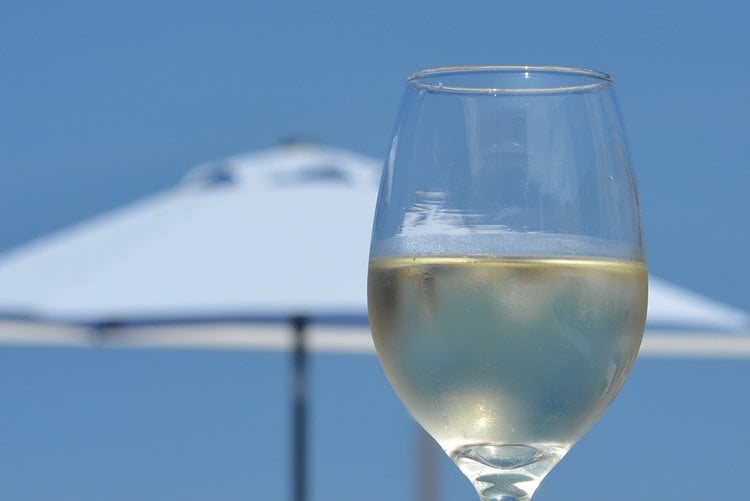Summary: A new study reveals consumers had increased emotions and were encouraged to pay more based upon the description of specific wines.
Source: University of Adelaide.
Research by the University of Adelaide has shown that consumers are much more influenced by wine label descriptions than previously thought.
A consumer study by wine researchers at the University’s School of Agriculture, Food and Wine has shown that far more than just influencing consumer choice, wine descriptions can alter consumer emotions, increase their wine liking and encourage them to pay more for a bottle. The study has been published in the journal Food Research International.
“Choosing the right wine at the point of sale whether in a wine store, in a restaurant or online can be a difficult task,” says project leader Associate Professor Sue Bastian.
“The importance of wine labels and label information has been widely studied and it’s been clearly shown that they represent useful information which influences consumer choice. Our study extends these findings, showing that wine descriptions also influence our whole wine consumption experience.”
“Cleverly written wine and producer descriptions when coupled with unbranded wine tasting can evoke more positive emotions, increasing our positive perception of the wine, our estimation of its quality and the amount we would be willing to pay for it.”
The researchers conducted a study with Australian white wines and 126 regular white wine consumers. The consumers evaluated the same set of three commercially available white wines (Chardonnay, Riesling and Sauvignon Blanc) under three information levels: a blind tasting with no information; the provision of a basic sensory description; and provision of an elaborate/emotional description.
The presentation of more elaborate wine descriptions, which included information regarding winery history and positive wine quality statements, significantly increased the preference rating the consumers allocated to the wines.

Further to this, the results showed that if the expectations elicited by the wine description closely matched the actual liking from tasting, consumers felt far more positive emotions than if it didn’t meet expectations.
“These findings have important implications for wine producers and the hospitality industry in that descriptions require more than just wine tasting notes,” says Dr Lukas Danner, post-doctoral research fellow and first author on the study. “Companies could even consider involving consumers in label description optimisation.”
Funding: This research was funded by Australian grapegrowers and winemakers through Wine Australia with matching funds from the Australian Government.
Source: Sue Bastian – University of Adelaide
Image Source: NeuroscienceNews.com image is credited to Carolina Institute for Developmental Disabilities at University of Adelaide.
Original Research: Abstract for ““I like the sound of that!” Wine descriptions influence consumers’ expectations, liking, emotions and willingness to pay for Australian white wines” by Lukas Danner, Trent E. Johnson, Renata Ristic, Herbert L. Meiselman, and Susan E.P. Bastian in Food Research International. Published online May 25 2017 doi:10.1016/j.foodres.2017.05.019
[cbtabs][cbtab title=”MLA”]University of Adelaide “Wine Descriptions Make Us More Emotional About Wine.” NeuroscienceNews. NeuroscienceNews, 7 June 2017.
<https://neurosciencenews.com/emotion-wine-descriptions-6862/>.[/cbtab][cbtab title=”APA”]University of Adelaide (2017, June 7). Wine Descriptions Make Us More Emotional About Wine. NeuroscienceNew. Retrieved June 7, 2017 from https://neurosciencenews.com/emotion-wine-descriptions-6862/[/cbtab][cbtab title=”Chicago”]University of Adelaide “Wine Descriptions Make Us More Emotional About Wine.” https://neurosciencenews.com/emotion-wine-descriptions-6862/ (accessed June 7, 2017).[/cbtab][/cbtabs]
Abstract
“I like the sound of that!” Wine descriptions influence consumers’ expectations, liking, emotions and willingness to pay for Australian white wines
This study investigated how information, typically presented on wine back-labels or wine company websites, influences consumers’ expected liking, informed liking, wine-evoked emotions and willingness to pay for Australian white wines. Regular white wine consumers (n = 126) evaluated the same set of three commercially available white wines (mono-varietal Chardonnay, Riesling, Sauvignon Blanc) under three information levels. Session 1, blind tasting (no information provided) and Session 2, informed tasting (held at least 1 week later) with both basic (sensory description of the wines) and elaborate (sensory plus high wine quality and favourable winery information) descriptions followed by liking, wine-evoked emotions (measured with the Australian Wine Evoked Emotions Lexicon (AWEEL)) and willingness to pay evaluations. Before tasting the wine in session 2, consumers also rated expected liking.
Results showed that information level had a significant effect on all investigated variables. The elaborate information level evoked higher expectations before tasting the wines, plus resulted in higher liking ratings, elicitation of more intense positive (e.g. contented, happy and warm-hearted) and less intense negative emotions (e.g. embarrassed and unfulfilled), and a substantial increase in willingness to pay after tasting the wines compared to the blind condition, with the basic condition ranging in-between. These results were consistent across the three wine samples.
Furthermore, if the liking rating after tasting the wines matched the expected liking or exceeded the expectations by 1 point on a 9-point hedonic scale, participants felt the most intense positive emotions and the least intense negative emotions. Whereas, if the expectations were not met or the actual liking exceeded the expectations by > 2 points, participants felt less intense positive and more intense negative emotions. This highlights not only the importance of well written and accurate wine descriptions, but also that information can influence consumers’ wine drinking experience and behaviour.
““I like the sound of that!” Wine descriptions influence consumers’ expectations, liking, emotions and willingness to pay for Australian white wines” by Lukas Danner, Trent E. Johnson, Renata Ristic, Herbert L. Meiselman, and Susan E.P. Bastian in Food Research International. Published online May 25 2017 doi:10.1016/j.foodres.2017.05.019






